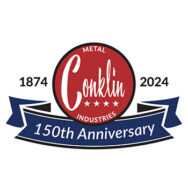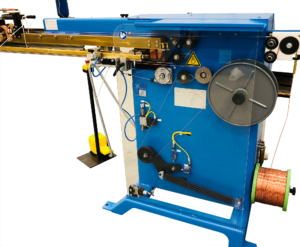Stitchwelder
We are big believers in that there are three machines required to “semi-automate” the Spiral Pipe portion of a Duct Shop: the Spiral Tubeformer, the Combi-T Gorelocker, and the Stitchwelder.
A lot of shops hold off initially on the Stitchwelder due to it’s $75k+ price tag and instead use a Spotwelder (or free-standing Clinching machine) to connect the longitude of the five segments prior to Gorelocking these five segments into an assembled Elbow. “Spotwelded and Gorelocked” Elbows is common and acceptable; it just doesn’t look as professional nor is it as fast as “Stitchwelded and Gorelocked” Elbows.
Even Adjustable Elbows, which for years were clinched or pop-riveted together on the longitudinal seam, are almost universally Stitchwelded. But that didn’t happen until about 5 or 6 years ago when Spiral Helix approached both Southwark and Gensco with the idea of using Stitchwelders on the longitudinal seam by giving them a machine to try for a week.Each of them has bought 4 to 5 units EVERY year since.Now everyone who makes Adjustable Elbows wants to have a longitudinal stitch weld because of the difference in appearance and the speed in fabrication.
You’ll not only make Spiral Elbows and Fittings faster; you’ll make them better looking.
A Stitchwelder is designed specifically for longitudinal seam welding of pre rounded Galvanized and Stainless “tubes”. Capacity is 28 gauge to 20 gauge in Galvanized and Stainless, Min of 3” length, Max of 40” length, seam overlap is 1/4”, the diameter of fittings are min 3” wide and a max of 39” wide.
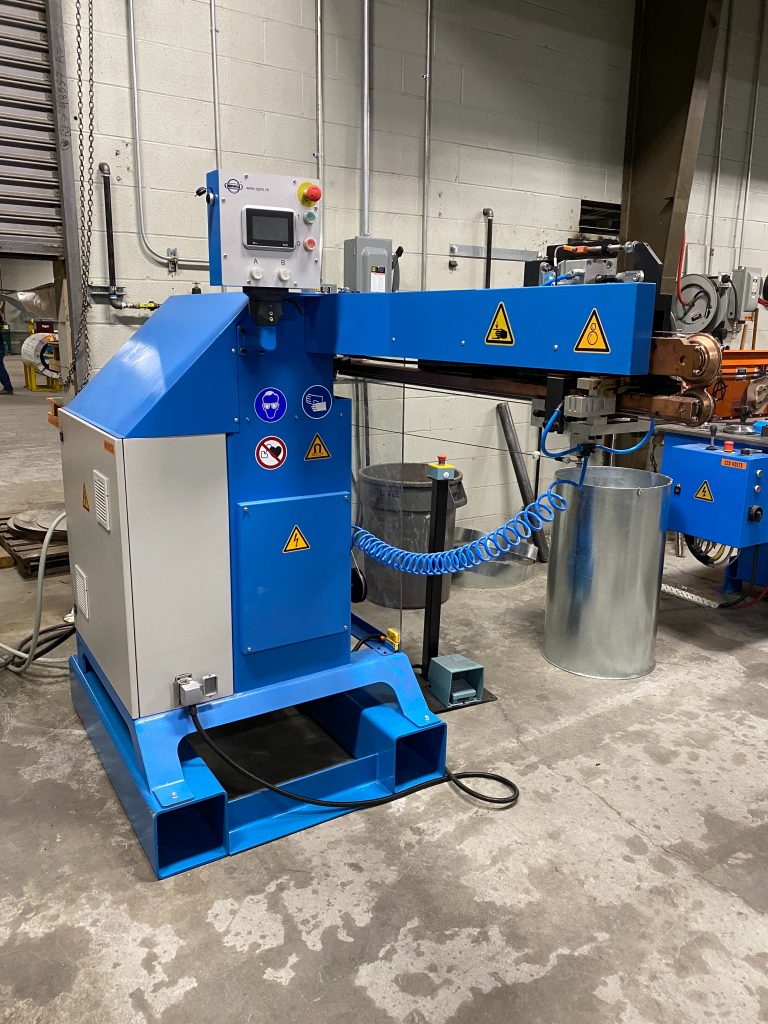
Good:
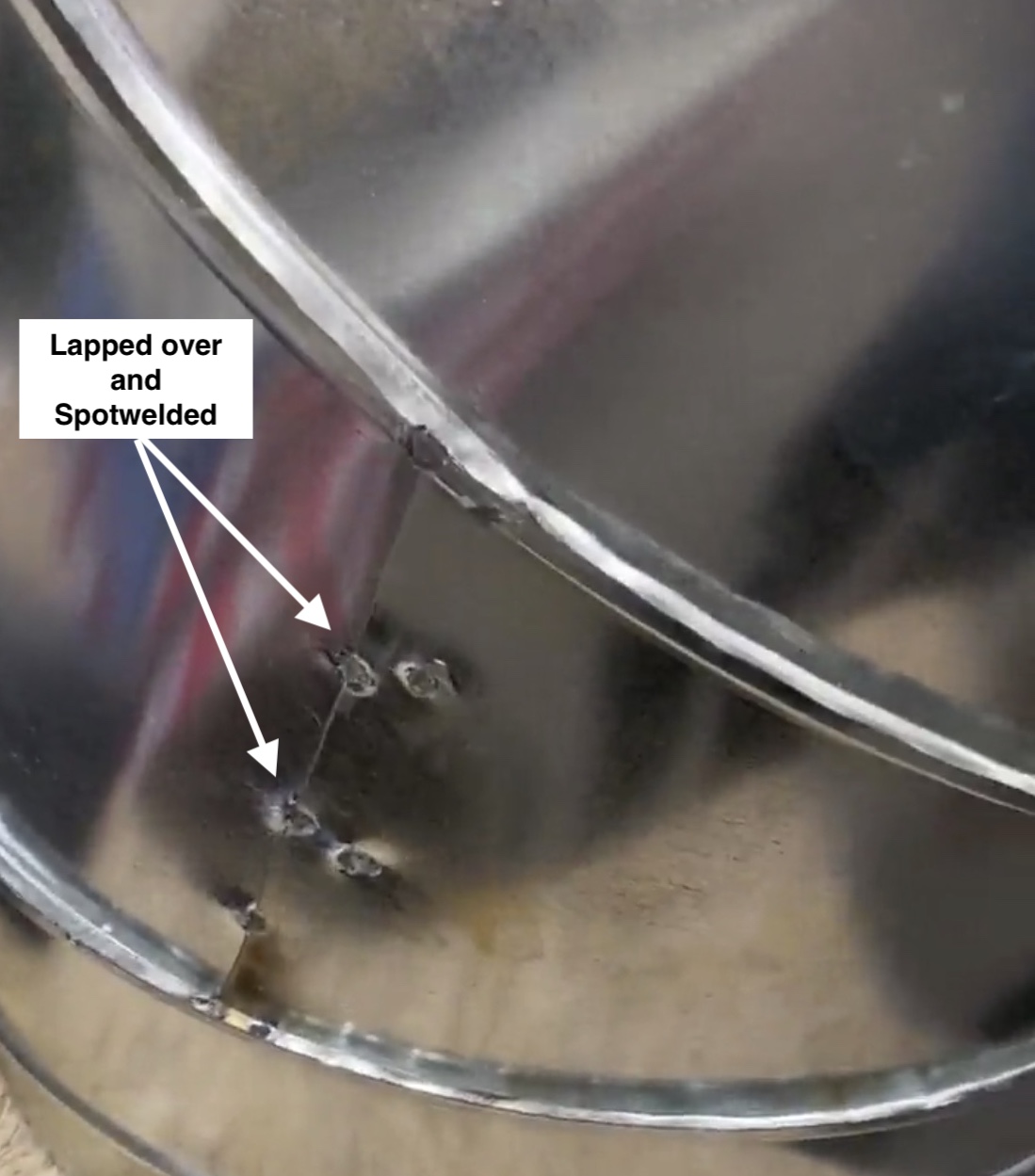
Better:
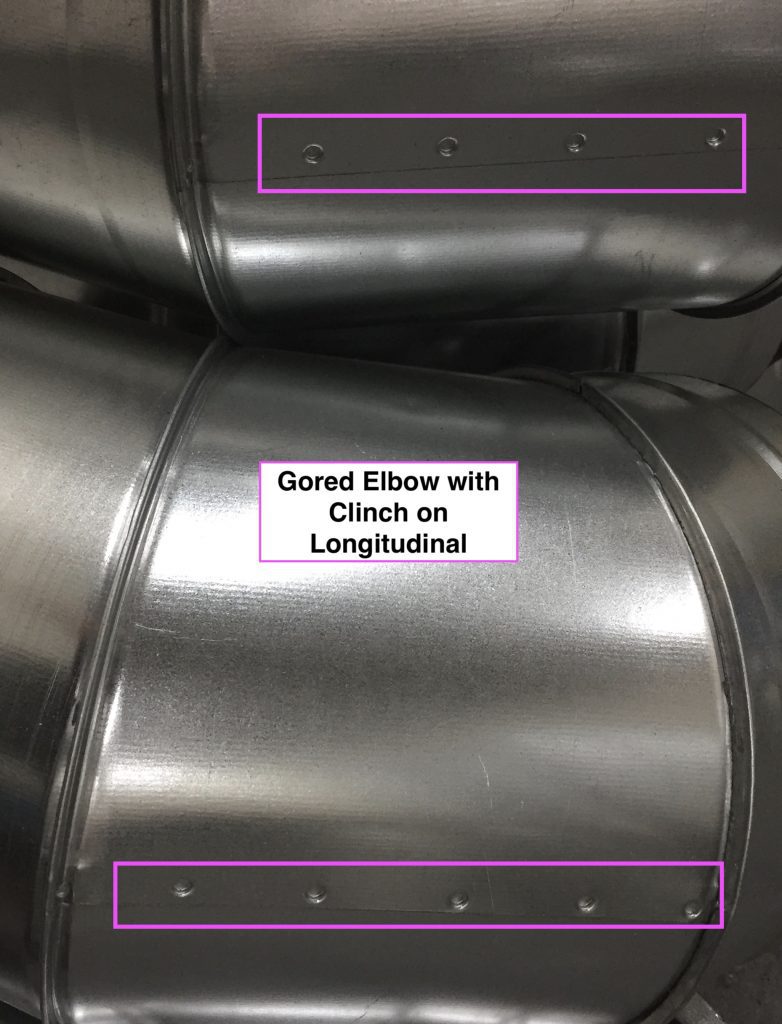
Best:
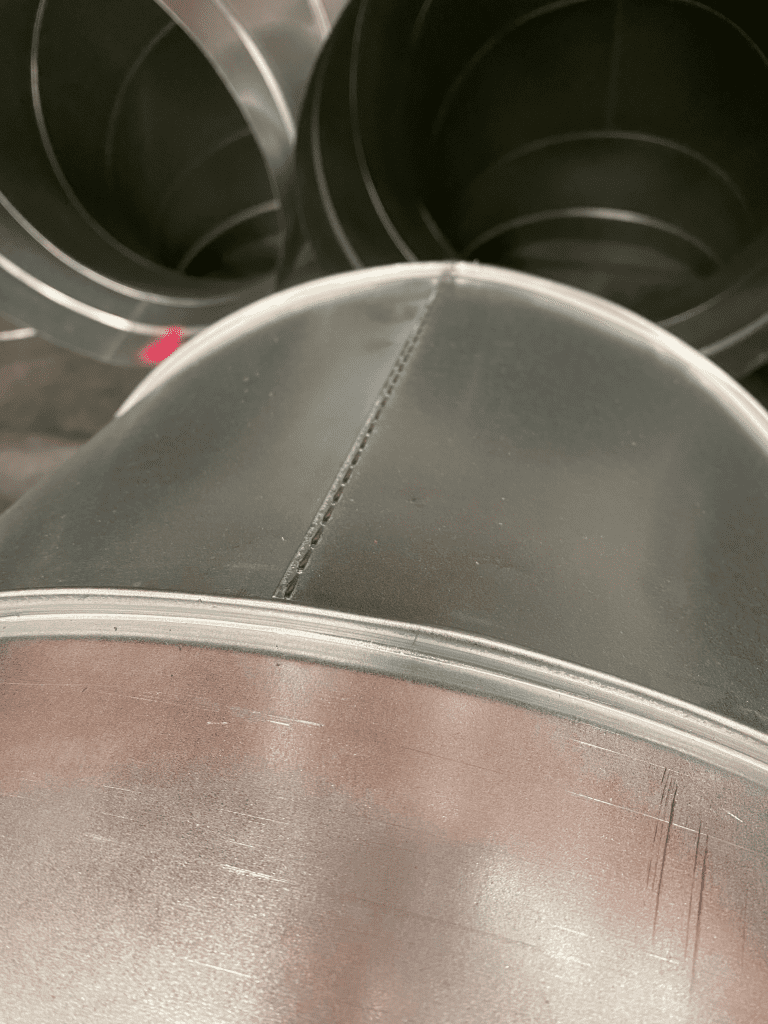
Two Rotating wheels…
Alternative to Spotwelding and Pop Riveting for seams on spiral fittings. Stitchwelding is a form of resistance welding in which the two joining workpieces are welded linearly between an Upper and Lower Rotating Wheel; less material is used because the overlapping is minimal, the process is fast and the seam clean.
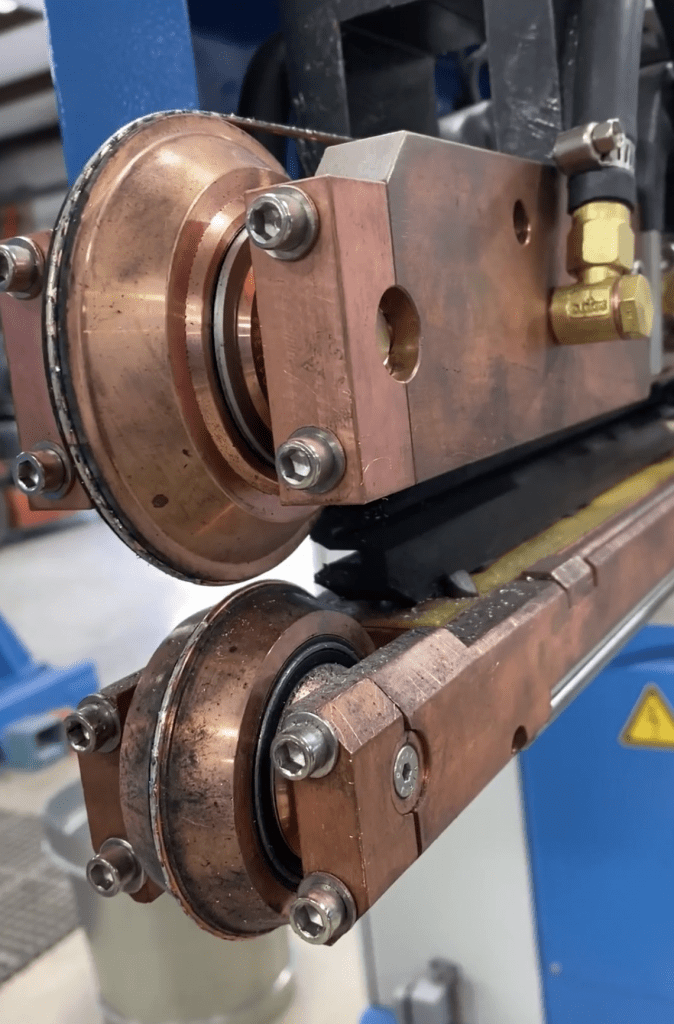
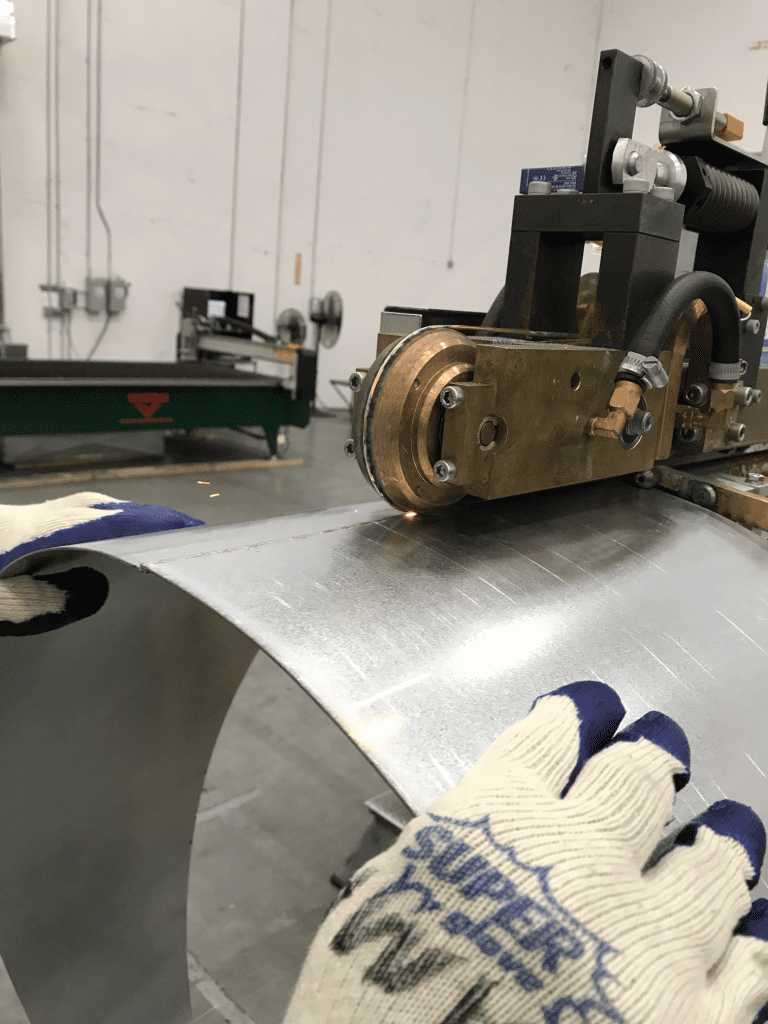
New PLC touch screen control panel allows easy set of parameters; Just enter the Gauge and choose between Stainless and Galvanized
